
Military Science Fiction is one of the oldest sci-fi categories. It combines something humans know well, war, with the cold expanse of space. It can be difficult, however, to adapt the physics of warfare on Earth to those outside of its gravity well. Spacecraft, for example, cannot change direction on a dime with a tilt of their wings. I will cover some basic considerations in this article.
Reaction Mass.
One of the first things that stands out when reading military sci-fi, is the seemingly inexhaustible supply of fuel. There is currently no engine capable of defying Newton’s third law, i.e. there must be an equal and opposite reaction.
Here’s a quick and perhaps unnecessary way to wrap your head around the physics of space travel. First, imagine you are standing on a perfectly slick surface. You can’t go anywhere because you lack traction. Your only option is to throw something in the opposite direction you want to move. If that thing shares your approximate mass, you will speed off in opposite directions at the same speed. Rockets are designed to throw the exhaust faster, so while the gas is lighter than the ship, its velocity in the opposite direction is much greater. The heavier the gas and the faster it is expelled, the quicker the rocket moves.
In space, Venus and Mars, our two closest neighbors, are hundreds of millions of kilometers away. Assuming we had a way to make a perfect fusion thruster and were already out of Earth’s gravity well, getting a one-hundred ton object to one of those planets in just a few days, not exceeding 1G acceleration, would require another 100 tons of fuel. Of course, you would need to bring fuel to carry that fuel, and then fuel to slow down, or else you’d reach your destination going about 8 million kilometers an hour. If you had a more efficient engine, like Ion thrusters, Photonic laser thrusters, or solar sails, you could get away with carrying very little reaction mass or none at all, but you’d have to wait a long time to get anywhere, and that would make a rather dull space battle.
To do your own calculations, check out this calculator.
So how do you fix these problems? Or are epic space battles entirely unlikely? To get the desired effect, you don’t need to invent an unrealistic engine, you just need to come to the battle prepared. Add a huge fuel tanker or two to your fleet, or have regular refueling outposts. Your fighters will need a large fuel tank to ship ratio and come back to refuel periodically during a fight. On the bright side, once you spaceship is in motion, it will stay in motion, so there’s no need to expend fuel constantly, just point where you want to go, and add a little thrust to get there. Just keep in mind, you’ll have to burn off that speed in order to arrive at a stop. Better still, if there is a planet nearby, jumping in orbit will gain you a round-trip ticket back to your starting point, and you can stay on that track indefinitely.
Maneuverability.
This brings up another problem I see in military sci-fi books. Rapid changes in direction are not possible in space unless you have maneuvering thrusters placed on all sides of the ship. This is something easily overlooked on Earth, since all aircraft have to do is change the shape of their wings. As I’ve already mentioned, spaceships do not need wings or any aerodynamic shape at all, unless they intend to enter atmosphere. In space itself, wings are useless, and so are all the maneuvers associated with them. If you want to reengage the enemy after a pass, swooping around is impossible without your engines burning a lot of extra fuel. The shortest distance between two objects is a straight line, so the best way to conserve fuel is to do a 180 degree turn in place and go back. Of course, throwing in some X, Y, and Z axis motions will help evade incoming fire.
One major caveat, and one mostly overlooked in military sci-fi, is the inertia. Changing direction too rapidly will apply a large amount of Gs to the ship and anyone inside it. The average person will pass out at 5Gs or when acceleration exceeds 49 m/s^2. Unfortunately, there is no such thing as inertial dampeners, at least not until gravity generators are invented. They would need to create a force like gravity in the direction of acceleration.
However, unless you really need to get somewhere in a hurry or are battling enemies with light-based weapons, you probably won’t need to move that quickly. In the vastness of space, you will likely see incoming enemies and fire from a long-way off, and should have plenty of time to avoid it.
Detection systems.
Detecting your enemies in space is easy compared to on Earth; there are fewer things to hide behind. But there is the matter of distance. Light scatters in all directions, therefore luminosity follows the inverse square law. That is to say, the brightness of an object at 1km, will be 0.25x as bright at twice the distance, and 0.01x as bright at ten times the distance. At 384400km, the distance between us and the moon, that object will appear 0.000000000006x as bright. So unless your spaceship is packing a huge telescope, getting a visual on small objects only as far out as we are from the moon, will be very difficult. Thankfully, you can amplify the “brightness” of objects, by illuminating them in other ways. One way would be to send large amounts of radar in their direction. That radar would have to be very intense in order to reach the object and return, weakened each way depending on the reflectivity of the object’s surface. These active scans also give away your position. Another way to detect incoming enemies would be a passive scan, looking for any broadcast signals, either radio waves or infrared. Most ships will emit both if they support human life and run military operations.
If you did manage to detect enemy ships at such large distances, you would need to take into account the time delay. Any signal you detect from a ship as far out as we are from the moon, would be about a second or two out of date. At the speed things travel in space, the enemy could be many kilometers away by then. As far out as Mars, and you are looking at several minutes delay. Shooting at them would be an extremely difficult task, and would require sophisticated computers to model their projected course. The same problem applies to fleet communications. If your forces are spread out all over the star system, it could take hours for communications to reach all of them.
Weapons.
In general, most of the weapons we employ in warfare on Earth would be equally if not more effective in space. Not only will projectiles stay their course, unaltered by Earth’s gravity, they will also be traveling the same speed when they hit the target as when they left the barrel. Without air resistance, they will not be slowed. This also means that bullets or other projectiles don’t need to be aerodynamic. The only reason to make a bullet pointy is to penetrate the enemy ship. The same principle applies to missiles. However, if you want your missiles to follow the target or evade countermeasures, they will need small thrusters on the nose to change their attitude midflight. Adding wings to your missiles is pointless unless you intend for them to enter the atmosphere. If the enemy is planet-bound, kinetic strikes would do huge amounts of damage with minimal effort, since gravity does most of the work.
Perhaps one of the most useful weapons will be lasers, as they will be able to cross the vast distances between ships without chance of detection and evasion. Lasers, however, would have to be extremely powerful and focused in order to do much damage. Even a small puncture of a pressurized vessel would do a lot of damage. They would also be able to knockout incoming missiles, an application currently in use on Earth.
Explosions will not be as effective in space as they are in atmosphere, so unless a missile explodes inside or right up against a spaceship, there will be no air to distribute the explosive force other than the gasses produced by the missile itself. And while nuclear weapons will be ineffective at producing shock waves in space, they do emit copious amounts of ionizing radiation. The impact of this radiation on crew and electrical systems will depend on the degree of shielding on the spacecraft and the distance at which it detonates from the target. The same consideration applies to EMPs. It’s likely any ship built for long-term space travel will have developed significant radiation and EMP defenses to protect against solar flares and cosmic radiation.
Defense.
Hardening the ship to radiation doesn’t require much more than a few inches of lead, or tanks full of water. Similarly, a completely metallic hull would be effective at blocking electromagnetic pulses. Components on the exterior of the ship, or breaks in the continuity of the hull (e.g. windows) could compromise the interior, however. Hull plates would need to be thick to stop kinetic projectiles, yet not so thick as to make the ship too massive to move. In addition to kinetic projectiles, there will be the occasional micrometeoroid or space debris, all capable of impacting with incredible speeds.
The defense most common in military sci-fi, is also the most unlikely. Shields, force fields, deflectors, or any other name for an invisible barrier capable of stopping high impact strikes, are not likely to exist anytime soon. At best, you might be able to generate a field capable of deflecting radiation, but certainly not large projectiles. Lasers and small, high fire-rate cannons would make short work of most missiles, but if those fail, flares, flak, hacking, or signal jamming may be effective countermeasures for most non-ballistic missiles.
Other defenses to consider are those meant to mitigate secondary damages, like fire suppressors, breach sealants, or the classic escape pod. You will most likely need some armed men and women aboard to protect against boarding. As a last resort, there’s always the self-destruct, something easily manageable with a nuclear core or by the simultaneous detonation of any remaining munitions.
Spaceship Design.
The structure of a spaceship will depend largely on its intended purpose. As mentioned, any craft designed to enter atmosphere will need to be aerodynamic, have wings, and more than likely, a heatshield. That doesn’t mean that all space-faring vessels will be blocky and aesthetically displeasing. A pointy nose and sleek profile is also useful for acceleration, i.e. placing the bulk of the ship in front of the thrusters. This provides structural stability and makes the ship less of a target for incoming projectiles. The more rounded the better, as this minimizes the surface to volume ratio, cutting down on hull material requirements and those pesky right angles that pressurized vessels find so offensive.
Then there is the matter of gravity. I can’t expect to change everyone’s mind on this count. Having some mysterious form of artificial gravity is very convenient. It holds the crew to the deck, it allows for the existence of inertial dampeners, and most importantly, it keeps the writer from having to consider gravity when designing their ship. There are two real forms of artificial gravity in space. One is a spinning torus, and the other is thrust. Continuous thrust will quickly deplete your fuel, and placing windows on a rotating torus is a great way to nauseate and disorient your characters. Still, I’ve seen many clever authors come up with creative solutions without compromising the story. You can read more about artificial gravity and other gravity considerations in this post.
In addition to a gravity system, you’ll need to set aside space for crew quarters, watch stations, hanger bays, storage areas, mess halls, bathrooms, environmental (water, air, and waste) processing, energy generators, and other day-to day necessities of a working, breathing, and eating crew. To learn more about enclosed ecosystems and life support, check out this post.
Because sustaining a crew in an enclosed ecosystem is a difficult task, the fewer the better. All the crew on board would need to pull their own weight. It would be a waste of money to house hundreds of specialized soldiers who sit there and do nothing waiting for their moment of action. Instead, the crew would most likely be composed of support personnel with secondary combat duties. There is the option, however, of having crew or combat specialists in a state of suspended animation, taking up little space and resources while they wait. Check out my post on suspended animation to learn more.
The Aftermath.
Wreckage and debris is often overlooked in military sci-fi. Because there is nothing to slow things down in space, whatever isn’t pulled into a gravity well will become a navigational hazard. At the speeds ships and explosive debris move, encountering even a small speck of debris can release as much kinetic energy as a bullet. Don’t believe me? The fastest bullets on Earth can maintain 4,500km/h in a vacuum, and a 25g bullet will release nearly 20,000 joules of kinetic energy. The International Space Station, by contrast, travels at 27,580 km/h. A near stationary spec of debris weighing just 1 gram would impact with the kinetic energy of 30,000 joules at those speeds. Check the math using this calculator.
Too much space debris can lead to a cascade effect known as the Kessler Syndrome, where a bit of debris destroys more objects, which turn into more debris and so on. After a significant space battle, it could become impossible for a planet to put things in orbit again.
I hope you enjoyed the post. Please leave a comment if you have any questions or would like to add a piece of advice to other military science fiction writers. For anyone with military experience, I’d love to hear your thoughts, especially when it comes to space tactics.
Until next time, Write Well and Science Hard.



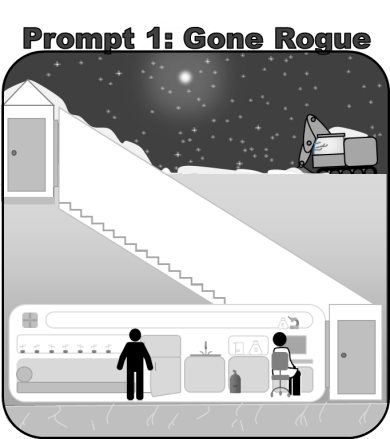


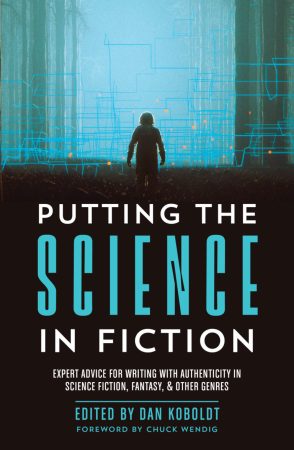


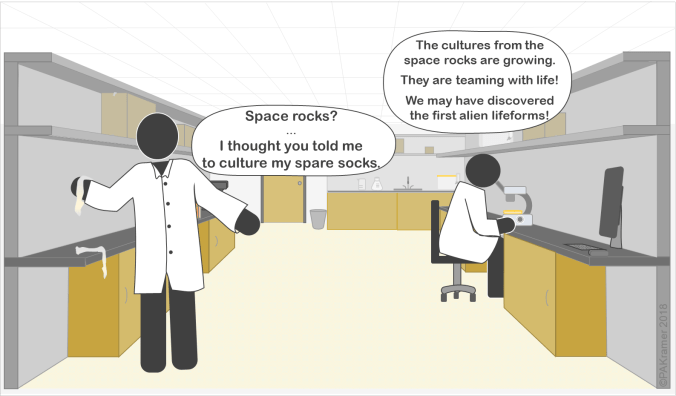
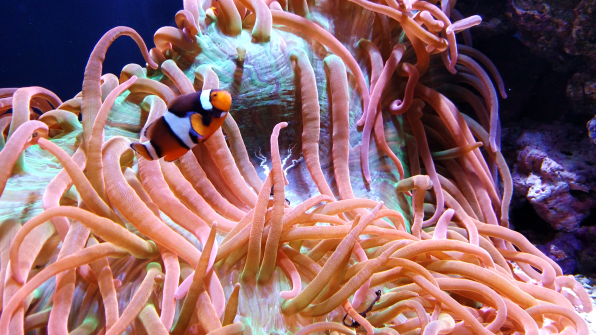

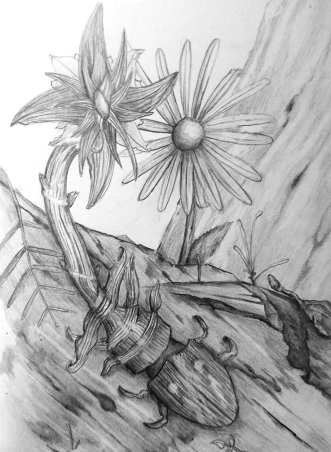

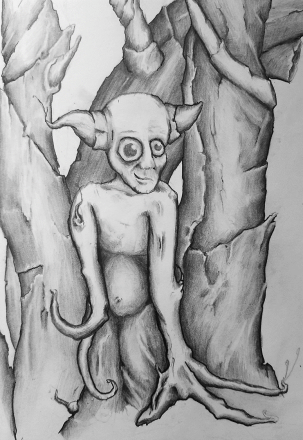

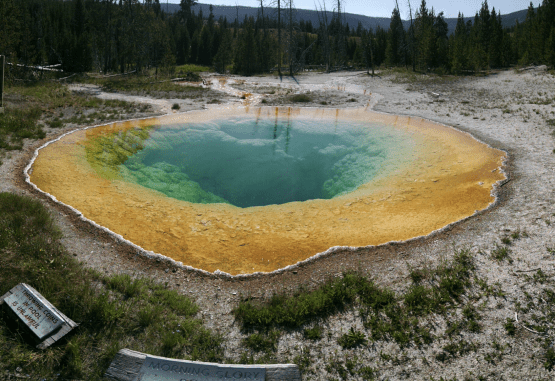




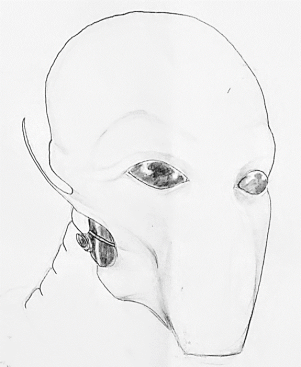

 So this was a first. A couple weeks ago I was interviewed by my alma mater, Auburn University Montgomery, for their article series titled “#WhyWeLearn.”
So this was a first. A couple weeks ago I was interviewed by my alma mater, Auburn University Montgomery, for their article series titled “#WhyWeLearn.”  Let us draw an arrow arbitrarily. If as we follow the arrow we find more and more of the random element in the state of the world, then the arrow is pointing towards the future; if the random element decreases the arrow points towards the past. That is the only distinction known to physics. This follows at once if our fundamental contention is admitted that the introduction of randomness is the only thing which cannot be undone. I shall use the phrase ‘time’s arrow’ to express this one-way property of time which has no analogue in space.
Let us draw an arrow arbitrarily. If as we follow the arrow we find more and more of the random element in the state of the world, then the arrow is pointing towards the future; if the random element decreases the arrow points towards the past. That is the only distinction known to physics. This follows at once if our fundamental contention is admitted that the introduction of randomness is the only thing which cannot be undone. I shall use the phrase ‘time’s arrow’ to express this one-way property of time which has no analogue in space.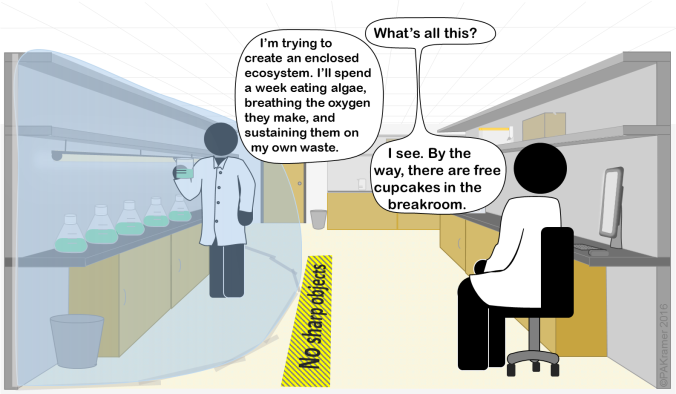
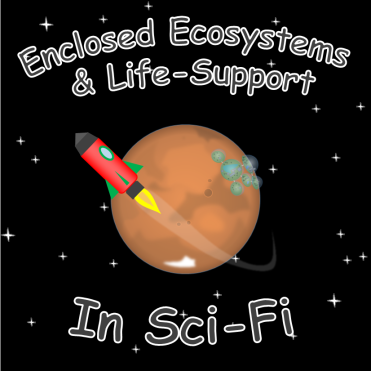
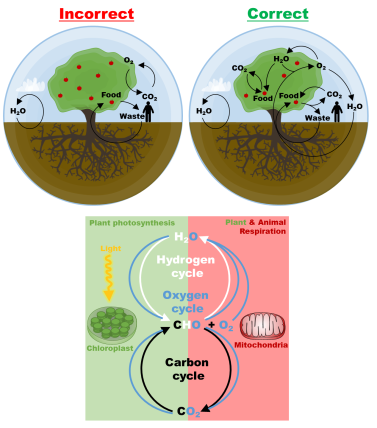
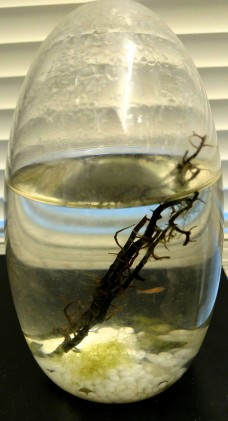
 I am posting much later in the week than usual. It was a busy week. Most of my time was dedicated to analyzing data and preparing a research presentation for a group at the university. It was in preparing the presentation that I came up with the topic for this blog post. I realized that the mechanics of giving a presentation were very similar to the mechanics of writing a book. The goal is to make it sell.
I am posting much later in the week than usual. It was a busy week. Most of my time was dedicated to analyzing data and preparing a research presentation for a group at the university. It was in preparing the presentation that I came up with the topic for this blog post. I realized that the mechanics of giving a presentation were very similar to the mechanics of writing a book. The goal is to make it sell.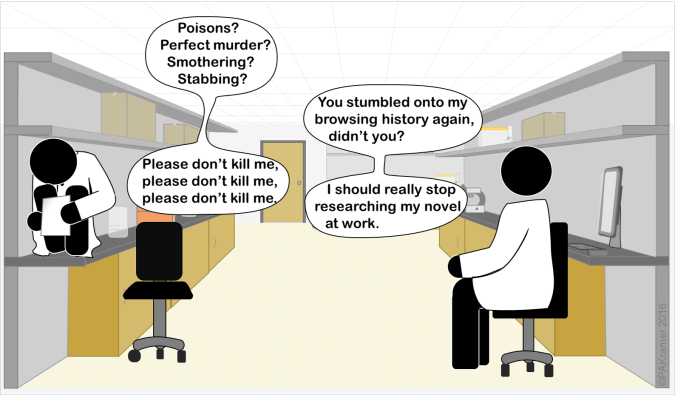 *** This post may contain some detailed and disturbing descriptions***
*** This post may contain some detailed and disturbing descriptions***